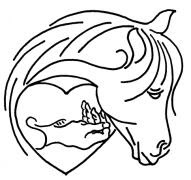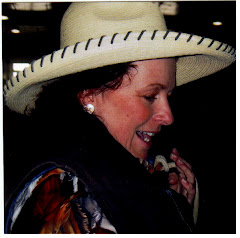Question:
My horse just doesn’t stop very well. She sorta stops sometimes, but most of the time she won’t stop well. What can I do to help my horse stop better?
Answer:
I like the way you asked the question. It tells me a lot about your attitude towards horsemanship. I think you are the kind of person who is trying to see this stopping business from the horse’s point of view. Many people would have asked the question in a much different way. If a person asks me “How can I make my horse stop?” It tells me they might be thinking the horse is doing something wrong rather than thinking the rider needs to change the way they present a request to the horse in order to help the horse feel like stopping.
The stop in a horse starts way before you are riding at a gallop and pulling back on the reins to make your horse stop. The stop starts before you ever mount your horse. The stop starts by teaching your horse to stand still when you halter the horse, brush and saddle him, trim his feet, or mount, etc. A stop is nothing more than a request for the feet to stay still. If your horse won’t stand still any other time very well, then stopping him while riding will be difficult no matter what aides or cues you use to request a stop. So I would start with the basics of teaching my horse to stand still in many situations at any time I ask, and that does not mean through physical restraint like cross ties or hobbles. Although it will also benefit your stop to teach your horse to stand still in hobbles or while being tied. You see everything is related to everything else, and everything matters even the little things. So every hole you have in your training will affect another part of your training.
Since you didn’t really explain to me what kind of stop you wanted to build in your horse, I have to make some assumptions. I’m not sure whether you want to learn a one-rein stop for emergencies or a sliding stop? Some people are satisfied with a dribble to a stop as long as the horse eventually stops for them. It depends on your goals and what you like doing with your horse, what kind of stop you want to build in your horse. However there is no doubt about it, the better your stop is no matter what discipline or activity you choose to do with your horse you will be safer if your horse stops well. I believe everyone who rides a horse should know how to do a one-rein emergency stop so well they could do it in their sleep. It may save your life some day. But if you haven’t trained for it, it won’t work!
A real stop is when the butt drops and the hind feet dig in right now at the slightest hint of asking for it, then the horse stays put happily, until asked to move off. I like to train so my horse enjoys giving me the stop because it is comfortable for him to do it. He also has to be content to follow my lead when stopping and standing still, which means I have to stop in my mind and body then stand still for him to be able to follow my lead. If I keep squeezing my legs and keep my energy up while pulling on the reins in order to try to stop the horse I am giving him mixed signals and it won’t be comfortable for him to want to stop. I have to present a feel in my whole body that signals a stop, before I ever do anything with the reins. Then I have to stand still in my mind and body in order for the horse to follow my lead.
A good stop is built from getting a good back up first, whether you are on the ground or riding the horse. So I ask you the question “How light and responsive is your horse to backing up?” If it feels like pulling a freight train which is off its tracks and the front feet are leaving trenches in the ground, then you have to fix the back up before the stop will improve. The idea is to go from forward to backing and then stop.
The next question which is important to ask and seems so obvious is “Do you have the horse’s attention?” Without the horse’s attention, you’ve got no horse to stop or back up.
Clear communication is possible only when you have the horse’s attention. See if you can get the horse to willingly move his thoughts along the direction you ask. Horses are heavy, but thoughts weigh nothing. So if you can direct a thought it requires only the slightest effort on the person’s part. When a person learns to direct the horse’s thoughts, there is no battle, no hauling back on the reins for a stop. If you and your horse can share the idea of “stopping together” then you don’t need to put any real pressure on the reins. You should be able to get a stop from adjusting your seat, but that takes a good independent seat. Which leads us to the next question in order to answer your question?
How is your independent seat when riding? Without a good seat, it will be very difficult if not impossible to present a properly timed feel and release with your seat and hands so the horse understands he is to stop and stand well. I have noticed a person with a poor seat cannot have quiet soft hands which are able to present clear communication. A rider with a good seat can have good hands if they pay attention to it, and therefore can avoid getting too heavy in the horse’s mouth in order to build a good stop.
If your horse stands still in all kinds of situations without physical restraint whether you are on the ground or riding, if you have and can keep your horse’s attention, if your horse is thinking of stopping, if your horse backs light and responsive, if you have as good independent seat and know how to stop in your body, if your hands can present a firm feel without pulling, if you can present a perfectly timed release you will have the ingredients for a good stop. There are other ingredients which will be necessary to build a long sliding stop like Reiners do, but these are the basics which will set most recreational riders up for success at building a better stop.
If you would like individual instruction on the ingredients discussed above for building a better stop, Sherry instructs riders on all of these foundational skills at every clinic she teaches. Go to www.heartinyourhand.com for a clinic, camp, and private lesson schedule, or host your own clinic and ride for FREE.
Happy Trails,
Sherry
Saturday, October 11, 2008
Subscribe to:
Post Comments (Atom)













No comments:
Post a Comment